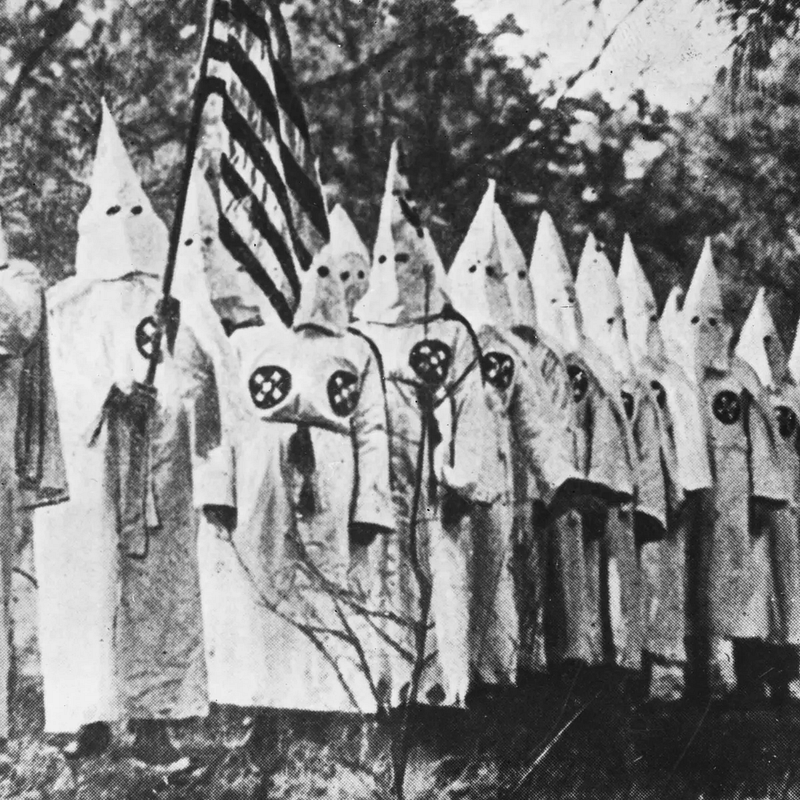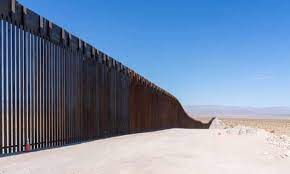The Weight of Hate: Why America Cannot Wait to Combat Anti-Immigrant Sentiment Any Longer
By: Mucteba Gokcek, MPAC Policy Intern, High School Future Leaders Fellowship

The United States is a nation of immigrants. It was originally formed as a safe haven for people who fled religious and ethnic persecution, however, over time, newcomers faced various forms of discrimination. The anti-immigrant sentiment then became rooted in policy, and its remains can still be found in legislation. Various laws have been passed in the Congress to uphold different forms of discrimination from slavery to anti-Asian and Islamophobic policies. Our democratic traditions and institutions embedded in the US Constitution prevailed over the years as new legislation that promoted bigotry was introduced, with many discriminatory bills prevented from coming to fruition, such as the series of Anti-Sharia legislation that was proposed in state legislatures around the country after 9/11. The historical examples of anti-immigrant legislation constitute a clear sign of a persistent issue we need to be aware of. From African Americans to Asians, Mexicans to Muslims, minority groups have been targeted by discriminatory legislation and continue to be impacted by the vitriol of its legacy to this day.
Here is a brief chronology of how discriminatory sentiments were able to brew, and the hate that came along with it.
Importation of enslaved Africans:
Diving deep into the history of the United States, many African Americans were forcefully brought into the colonies as slaves centuries ago. Many Africans died before even reaching the colonies due to the inhumane conditions and brutal treatment they received on board. Those who were able to reach the colonies were subjected to torture and terrible working conditions simply because the white colonists thought they were superior to the black slaves.
Jim Crow Laws:
After decades of struggle to attain their freedom, African Americans were still subjected to racism through the Jim Crow laws which segregated African Americans and racially targeted them. These laws were further protected after the Plessy v. Ferguson case, which originated from an incident in which an “African American train passenger Homer Plessy refused to sit in a car for Black people”, determined the “separate but equal” treatment of African Americans was not unconstitutional.
Rise of White Supremacist Groups Throughout the U.S.:

Even after African Americans were granted constitutional freedoms, white supremacist groups such as the Ku Klux Klan, the Knights of the White Camellia, the White League, and the Red Shirts continued to harass, torture, and kill African Americans. Many more examples of such violations of African American rights taint US history.
Chinese Exclusion Act:
Since the late 1800s, Asian immigrants have been subjected to discrimination in the US. In 1882, President Arthur signed the Chinese Exclusion Act into law because of the rise of Chinese immigrants in the U.S.A., which was driving wages down. It effectively suspended immigration from China. Although many Chinese-Americans challenged the constitutionality of the legislation, they all failed. However, in 1943, Congress passed the Magnuson Act, which repealed the Chinese Exclusion Act by allowing at most 105 visas for Chinese immigrants. This was passed due to the decrease in anti-Chinese ideologies, FDR fighting to correct the “historic mistake”, and because of the consideration that China would become an ally in World War II. This constitutes an example of how anti-immigrant legislation can be overturned in time as xenophobia is addressed in political circles and in the larger society.
Alien Contract Labor Law:
Another response to the decreased wages caused by the surge of cheap labor from the Asian immigrants was the Alien Contract Labor Law of 1885. It was an act designed to prohibit the immigration of foreigners, more specifically Asians, under contract or agreement to perform labor in the United States.

Literacy Act
Another dimension of the legislatory discrimination was exemplified against Eastern Europeans. Following World War I, many Eastern Europeans immigrated to the United States. This, in return, drove wages down and supposedly decreased the number of jobs available. In response, the first piece of legislation that was passed was the Immigration Act of 1917, also known as the Literacy Act. It required all immigrants over the age of 16 to be literate, and read at least 30–40 words from their own language. A section of the law also barred a large portion of Asians from migrating to the U.S. within set longitudes and latitudes. This section gave this Act its less commonly known name of Asian Barred Zone Act. In 1952, the Immigration and Nationality Act of 1952, also known as the McCarran-Walter Act, broke down the Act of 1917. This law however, was also discriminatory against immigrants as it placed preferences on economic potential, special skills, and education. Then in 1965, even the limits that the Act of 1952 had were removed by the Immigration and Nationality Act of 1965.
Emergency Quota Act of 1921 and Immigration Act of 1924:
The next piece of legislation aimed towards Eastern Eurpoeans was the Emergency Quota Act of 1921. Its purpose was to reduce the number of immigrants coming in from a country to 3% of that respective nation’s population. This restriction was furthered with the Immigration Act of 1924 by decreasing the number of immigrants coming in from a country to 2% of that respective nation’s population. In addition to decreasing the acceptance rate, the act also mandated that no immigrant could be allowed to enter the United States without a valid immigration visa. These examples reveal that the discriminatory mentality did not only target the Muslims, Asians, and African Americans, but also white immigrants of various ethnic backgrounds. The Emergency Quota Act of 1921 and Immigration Act of 1924 were also revised by the Act in 1952 and further changed by Immigration and Nationality Act of 1965.

Mexican Repatriation and 1954 INS program (Operation Wetback):
Anti-Hispanic racism can be traced back to 1929 and Mexican Repatriation. It was a mass deportation of 400,000–2,000,000 Mexicans back to Mexico simply because of their race. Many scholars today argue that it meets the legal definition of an ethnic cleansing. Operation Wetback was a U.S. immigration law enforcement operation, which led to the deportation of over 1 million Mexicans living in the U.S. This action was in response to the high number of Mexican immigrants living in the U.S. which was supposedly causing labor to become cheaper. In 2005, however, California Senator Joseph Dunn helped pass the “Apology Act for the 1930s Mexican Repatriation Program”. During the 1930s California had deported around 400,000 people to Mexico, and this bill officially apologized for the “fundamental violations” of the deportees’ constitution rights.
Patriot Act:
The backronym for Uniting and Strengthening America by Providing Appropriate Tools Required to Intercept and Obstruct Terrorism, the Patriot Act abused the privacy and constitutional rights of countless people and more specifically Muslims. After the 9/11 attacks, the Patriot Act was passed for the purpose of securing borders against terrorists. However, this law made it much easier for law enforcement to spy on and arrest Muslims without a proper reason, but mainly based on their religion. Thankfully, in March 2020, Congress did not pass a renewal for the Patriot Act.
The Aviation and Transportation Security Act

Through the Aviation and Transportation Security Act, Transportation Security Administration (TSA) was formed to protect the airports from terrorism, and were responsible for airport screenings and were in charge of the No-Fly List and the Automatic Selectee list, two “terrorist” watchlists prone deeply to racism in practice. After 9/11, the No-Fly List increased from 16 people to 44,000 by 2006. Many of the people added to this list were innocent and simply looked or were Middle Eastern. It became a common scene to observe “Middle Eastern-looking” passengers at the airports “randomly selected” for additional screening.
Texas Senate Bill 4:
Another example of discrimination against Mexicans is Texas Senate Bill 4 of 2017. In simple terms, it allowed police to question detainees about their immigration status even on routine traffic stops. It also required Texas law enforcement agencies to comply with the U.S. Customs and Immigration Enforcement detainers and will punish local government entities for not enforcing federal immigration laws. This is terrible for many Mexicans in Texas as some may not be of legal status. Additionally, this bill encouraged other states to pass harsher punishments to law enforcement agencies or government agencies who don’t comply with federal immigration laws.
Executive Order 13767 (Trump’s Wall):

President Trump had built his entire campaign around the theme of building a wall on the border with Mexico and stopping illegal immigrants from coming through the border, calling them drug dealers and gang members. When he won the 2016 election, the president initiated his wall plans on the southern border with Executive Order 13767. Although President Biden stopped the development of the wall, the sections of the wall that were built signifies the racist attitude many in the US have against Mexicans and South Americans.
Executive Order 13769 (Muslim Ban):
President Trump’s Executive Order 13769, also known as the Muslim Ban, banned entry into the United States from Iran, Libya, Somalia, Sudan, Syria, and Yemen — all Muslim majority nations. Up to 60,000 visas were revoked and many more were rejected from entering the US during the time it was in action. Although this executive order was in theory passed to protect “the nation from foreign terrorist entry into the United States”, it blocked many innocent Muslims from being able to escape war, poverty, and/or hunger, until it was removed as one of the first acts of President Biden.
Georgia House Bill 531:
A very recent example of racism towards African Americans was Georgia House Bill 531. This bill added ID requirements for absentee ballots, reduced early voting days on weekends, and made it a crime to give food or water to those waiting in line to cast their votes. Although this may seem in response to the pandemic, it was most certainly a response by Georgian Republicans to losing their Senate seats to Democrats. The lines for those waiting to vote in Georgia were disproportionately African American (majority Democrat voters), so making it a crime to give out food and water discourages voters from going out of their way to cast their votes. Similarly, ID requirements and restrictions on absentee ballots aimed to reduce African American votes to gain an undemocratic advantage for Republicans.
As a nation of immigrants we must use our democratic institutions and traditions to ensure that immigrants are welcome to this country and that they are given equal rights and opportunities. Examples of legislation such as these may rise again in the future, and we must be mindful of the effects they have on not only immigrants but the entire nation. As Eisenhower suggested in his Farewell Speech, “only an alert and knowledgeable citizenry” can ensure that our liberties and democratic freedoms are protected. As US citizens, we have a responsibility to stay abreast of topics in the news, support organizations such as MPAC, and reach out to our senators and representatives to make sure discriminatory sentiments never find their way into policy making and legislation. We must keep our eyes open, be alert, and actively engaged to make the American Dream open to all.